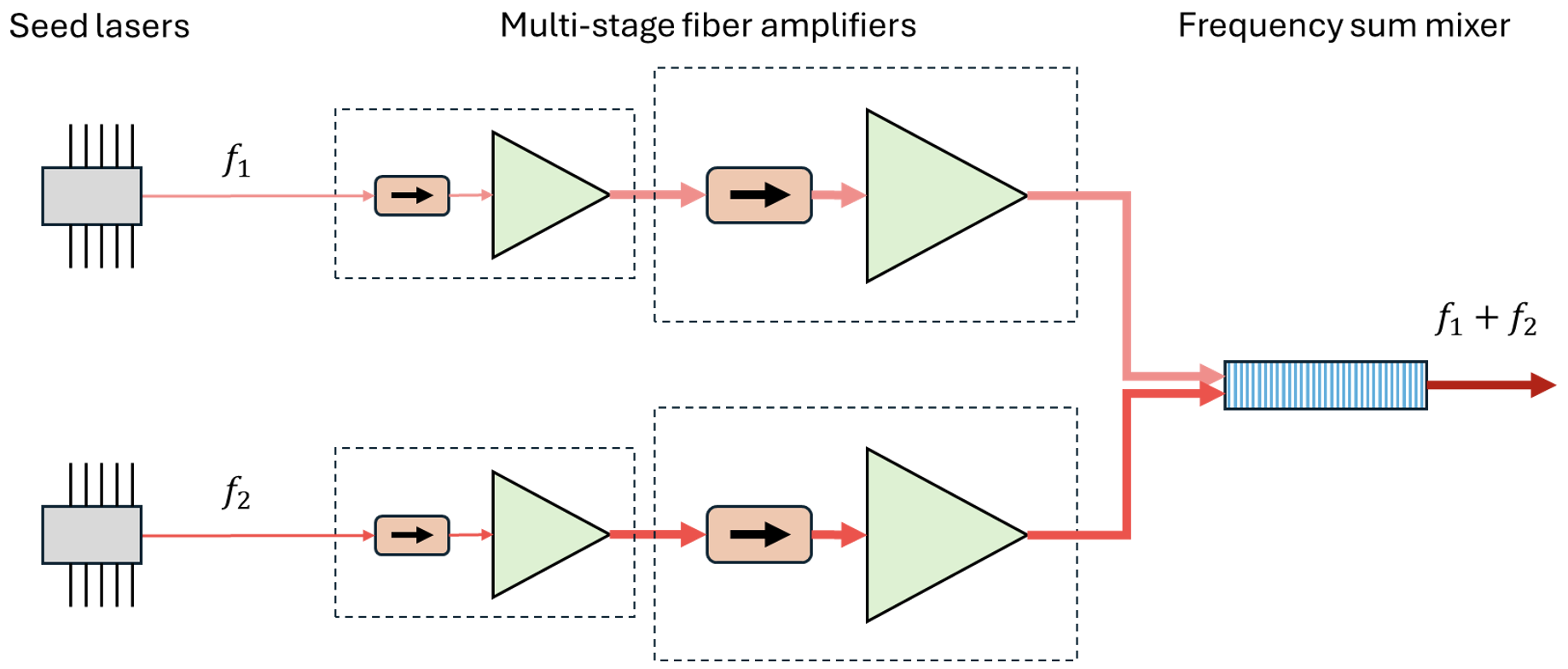Technology
Fiber Amplifiers
One of the essential QTekLaserTM technologies is the optical-fiber-based amplifiers that can amplify milli-watt optical signals up to hundreds of watts while maintaining low noise and high reliability. These merits are critical in the rapidly growing quantum industry, which includes but is not limited to quantum sensing, quantum computing, and quantum communication. This amplifier is based on the physics that certain optical fibers, when being optically pumped, can be good optical gain media, through which a weak laser signal within a wavelength range can be amplified substantially. These fibers and their amplification bandwidth are Yb-doped with an amplification wavelength range of 1010 - 1090 nm, Er-doped with a range of 1529 – 1615 nm, and Tm-doped with a range of 1680 – 2060 nm.
QTekLaserTM can amplify a 10 – 20 mW input signal up to:
- 100 W for wavelengths between 1012 – 1080 nm
- 60 W for wavelengths between 1530 – 1610 nm
- 60 W for wavelengths between 1776 – 2040 nm
The amplifiers are compatible with both broad-linewidth (GHz) and narrow-linewidth (<10 kHz) seed lasers without suffering from the stimulated Brillouin scattering (SBS) effect. Carefully designed low-noise electronics drive the amplifiers so that no significant noise is added, maintaining a low relative intensity noise (RIN). Efficient thermal management design, vibration-resistant packaging, and stage-by-stage interlocks are incorporated to enhance the long-term reliability of our lasers and meet the 24/7 operational needs of the quantum industry. Monitor sensors inside the laser system can be accessed via TCP/IP protocols.
Non-Linear Frequency Conversion
QTekLaserTM specializes in non-linear frequency conversion. Second-harmonic generation (SHG), or frequency doubling, and sum-frequency generation (SFG) can produce wavelengths outside of the ranges listed above. Expertise in these methods allows QTekLaserTM to produce the specific wavelengths often needed in quantum computing and related fields. See below for more information on the individual techniques.
Single Frequency
QTekLaserTM amplifiers work with various kinds of seed lasers. They can be economic semiconductor diode lasers with MHz laser linewidth, robust fiber lasers with kHz linewidth, or cavity-locked ultra-stable lasers with Hz linewidth. Based on customer requirements, we can recommend the best options and integrate them into the laser system as illustrated in figure 1.

Second-Harmonic Generation (SHG)
QTekLaserTM offers laser systems with extended wavelength range by combining nonlinear frequency conversion technologies. Through second-harmonic generation (SHG) we achieve significant laser power at the visible and NIR regime (figure 2; red-shaded cells of table 1). With the development of periodic poled crystal technology and the associated waveguide technology, nonlinear frequency conversion has become a powerful tool to extend the application scope of fiber lasers. For QTekLaserTM products, the maximum power of the converted laser light is constrained by the damage threshold of commercially available nonlinear crystals, which is typically several tens of watts.


Sum-Frequency Generation (SFG)
The wavelength range of QTekLaserTM products can be further extended using the nonlinear process of sum-frequency generation (SFG). This architecture is illustrated in figure 3. The two fundamental lasers are usually made of different gain fiber amplifiers. The extended wavelength values are summarized in the blue-shaded cells of table 1. This method achieves high power at certain wavelengths.
